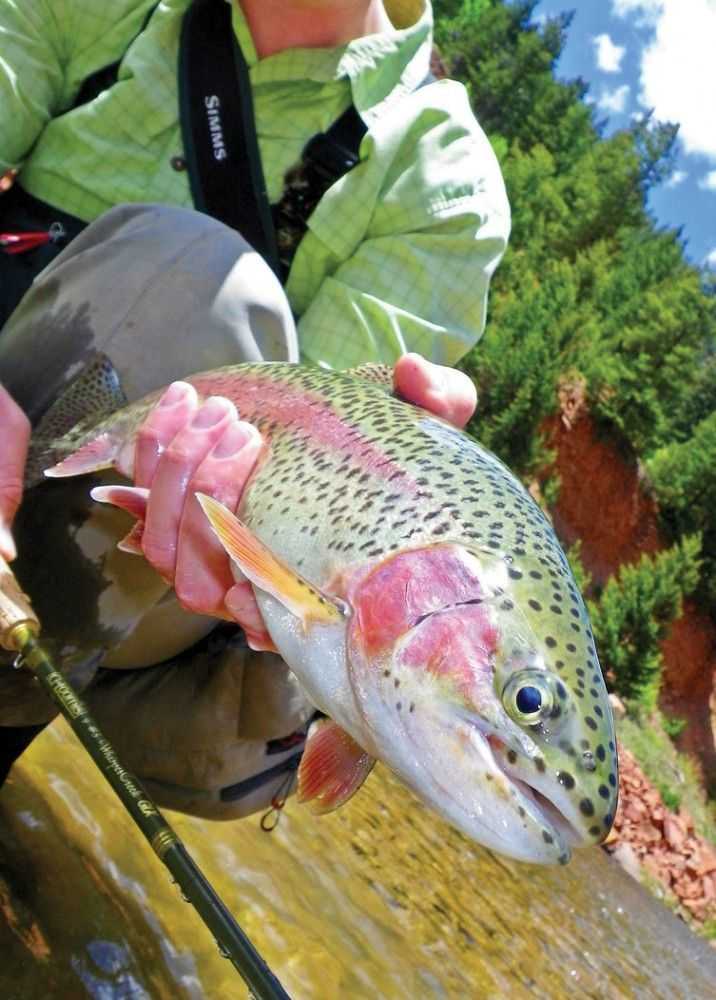Get An Education On Colorado’s Fryingpan River
Kirk Webb
The Fryingpan River in Basalt, Colo. is legendary for complex mayfly hatches and discriminating, large trout—up to 10 pounds or more—that test the skills of the world’s best anglers and fly tiers.
Getting an education here is commonly referred to as going to “Fly Fishing Jesuit School,” according to local fishing legend, Roy Palm. Virtually every fly angler has, wants to, or will, get an education here; very few get diplomas. It’s a classic, small, Western tailwater that is sheer Nirvana for dry fly fishers the world over with celebrated hatches of green drakes, pale morning duns, blue wing olives and midges among others.
The 14-mile stretch of river below Ruedi Reservoir houses every conceivable water type, long sexy glides, deep pools, roily pocket water and everything in between. The small size of the river provides anglers with easy, intimate wading opportunities and a bounty of public water. Brown and rainbow trout compromise the majority of the anglers’ catch, though both brook trout and Colorado River cutthroat trout are also present, providing the opportunity to catch a Colorado grand-slam.
Having fished the Fryingpan River for more than 20 years, I’ve come to appreciate the lesser known, or even unknown, hatches along the river including March browns, brown drakes, aphids and the enigmatic Serratella mayfly to name a few.
Picture this. You’re knee deep in the Fryingpan, anxious to catch some fish. You’ve already made the commitment that you’re not going to be doing any nymphing today. You sit down on the bank and observe Mother Nature at her finest. Fish are rising in good numbers on the shady side of the far bank. You feel confident while tying on a size 12 Green Drake Sparkledun trailed by a size 16 CDC Thorax PMD on 6X fluorocarbon tippet. You know the drill here. These fish are tough, but seem to be rising with reckless abandon. This shouldn’t be too hard, you say to yourself.
You make your approach from upstream and get to within 40 feet of the pod of risers being careful not to spook them. You cast 10 feet ahead of the lead rising fish, which seems to be the largest amongst this hardened street gang. Your flies land on target, your drift is drag free, but no result. Not even so much as a half-hearted look. You go through your bag of tricks and try surface emergers, sunken spinners, floating nymphs, ants, 8X tippet, reach casts, downstream drifts and nothing produces. The fish continue to rise, but to what?
Welcome to the wonderful world of the infamous Fryingpan Serratella. They occur in fishable numbers in very select waters including the Fryingpan, Yellowstone and Henry’s Fork. The serratellas of the Fryingpan, however, are an adaptation that is unique to only the Fryingpan.
Many are enamored by the infamous, flightless serratella of the Fryingpan River, and many more have been beaten down by this hatch. This hatch is truly a spectacle to behold. It’s hard to fish, but extremely rewarding when you get it right. It’s just one of the enigmatic quirks that make the Fryingpan a world-class destination for fly anglers who feel the need to test their skills.
[easy-social-share]
